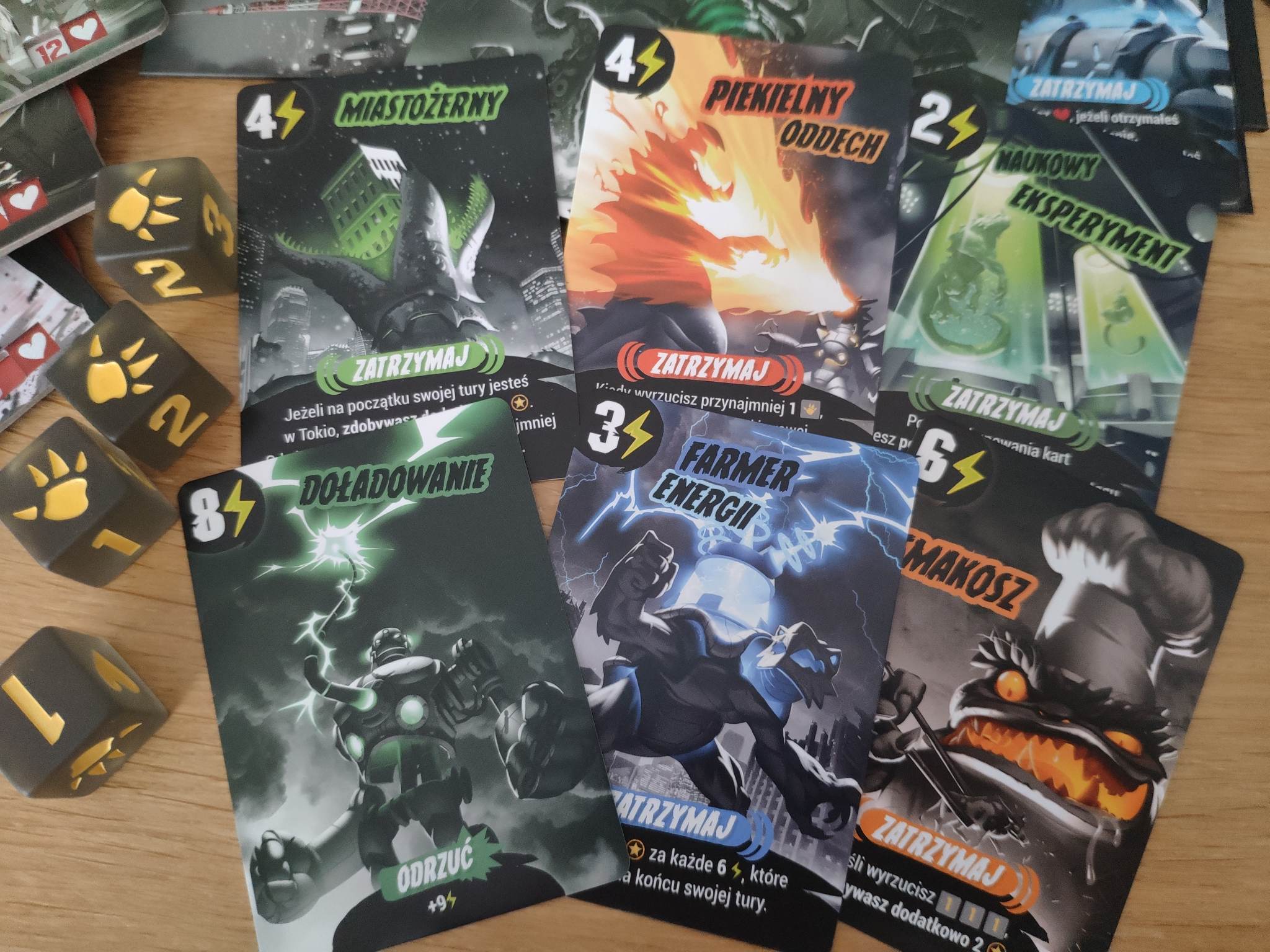“I’m spitting acid and taking over the city center!”
“I jump back and breathe a beam of destruction!”
“I dodge, climb a skyscraper and charge myself with moonlight!
“I’m biting everyone with my two heads!” (a record of conversations from the game Monsters in Tokyo: Dark Edition , Warsaw 2023, colored)
What remains monstrous?
The basic rules of the game remain the same. Players take on the role of great monsters terrorizing Tokyo, taking turns rolling the dice and performing actions related to the results. So there is an attack and healing damage, collecting energy and points. The first player to score 20 points or the last one standing wins. The atmosphere is turned up by power cards that improve our monsters – thanks to them we can use various tricks, which makes each game exciting and looks different.

The game captivates with its dynamics; Player turns are lightning fast and action-packed. When throwing dice, we tempt fate by choosing dice to reroll, hoping for a better outcome. Our monster, taking over the city, gains certain points and attacks everyone, but he himself is exposed to attacks and cannot heal. Hence, the decision to stay in Tokyo or escape accompanies us in each player’s turn and determines victory or defeat.
Monsters in Tokyo work best with a slightly larger group (3+ players). In the case of a two-player game, the pace slows down a bit – two monsters are beating each other, pulling the rope. This issue can also occur in multi-player games after several players are eliminated and are left to passively observe the final match.

After Tokyo in the series, a version of Monsters in New York was released , which features more extensive board control mechanics, among other things. This, in my opinion, takes players away from the main focus of the game and makes the combat less tense.
What turns dark?
The very graphics of the Dark Edition box herald a revolution in the quality of workmanship. All monster and power card illustrations have been transformed. It is dominated by black and shades of gray, which are interspersed with bright flashes. The most important details, including flames and various forms of energy, gained a phosphorescent glow. For me, this change makes a huge impression – monsters gain seriousness by using less comic book colors.
Other components (cubes, energy markers, tokens) have been adapted to the new style. The large cubes, now imitating frosted glass, look especially good, and energy markers in the form of green lightning bolts instead of the standard square markers.

The second major change is the addition of the Twirl rules. If in a turn we throw a set of ones or twos on the dice (which in the previous installment was not a very satisfactory result), we move on a new track, placed on the edge of the board. After reaching the third, sixth and tenth field, we gain new powers for our monster. Twist powers work much like cards, giving either permanent buffs or powerful one-time effects. They won’t guarantee a win by themselves, but they can make it easier.
The Twist track is integrated into the game in a way that doesn’t require many rules, so it doesn’t draw our attention too much. This is an improved version of the rules from the base game expansion, Boost. In it, each monster had a deck of unique upgrades, which meant that each one played a little differently. In the Dark Edition , this mechanic has been polished and refined to the point where it feels like an integral part of the game.

I would also like to add that in the new edition some cards have been balanced after taking into account several years of collecting feedback, and the two-player mode has been slightly changed to make the duel more interesting.
The dark enemy of the good
New Monsters in Tokyo: Dark Edition is an exceptionally successful installment of a solid series of games. The gameplay, which was exciting and satisfying in the original, has been taken to a higher level. And this graphic design … it’s just great.

